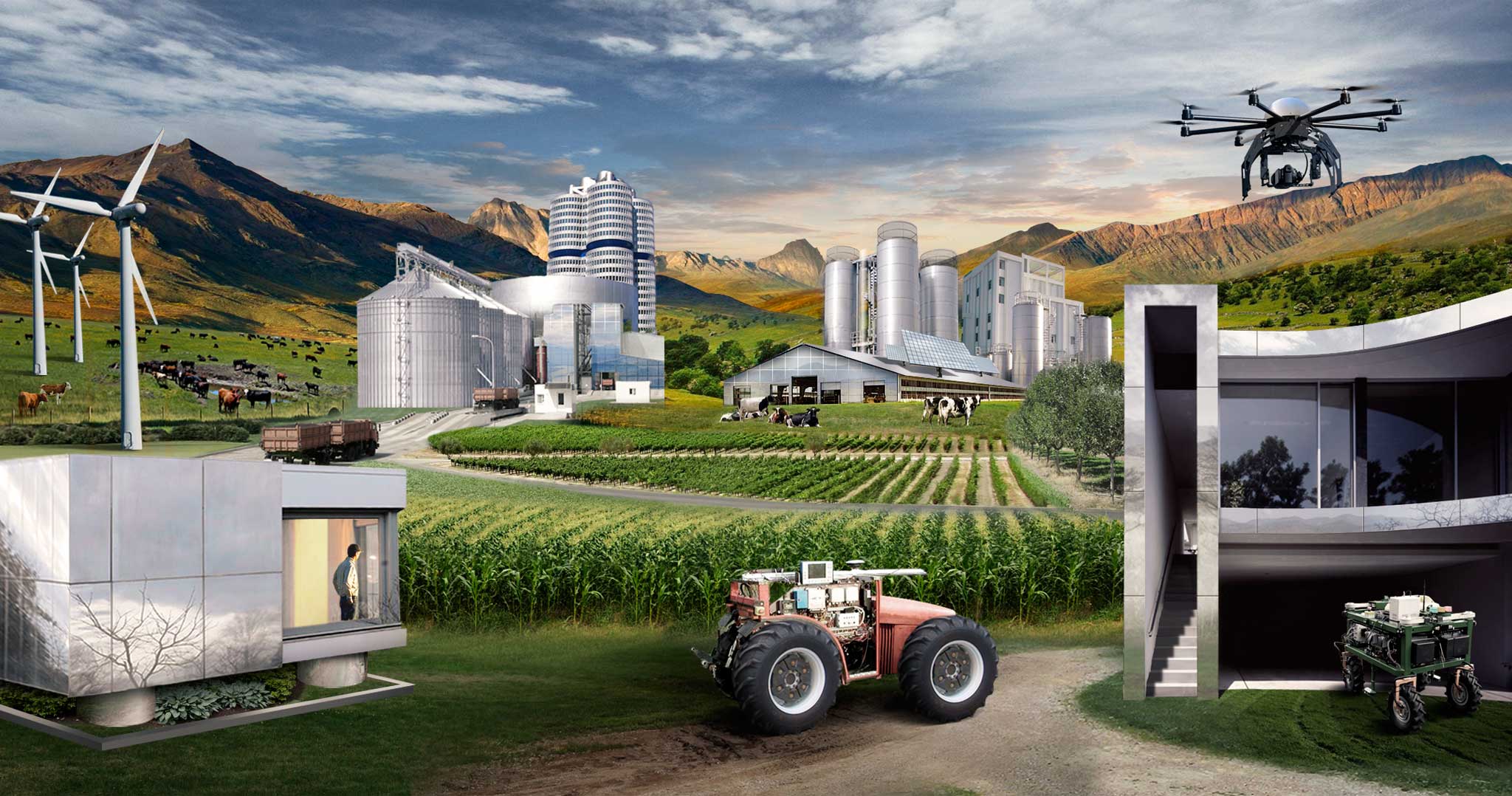
Tech Trends 2023: Revolutionizing Agriculture with AI Innovations!
Updated Jan 1, 2024
In the era of relentless technological advancements, the agricultural sector is not left untapped. The tech trends of 2023 see the dawning of a new age in farming, where Artificial Intelligence (AI), robotics, and data analysis are transforming traditional agricultural practices into intelligent agriculture.
Firstly, let’s delve into vertical farming, a technique that has been gaining traction in the tech trends of 2023 and will continue to do so. Vertical farming is an innovative method of growing crops in vertically stacked layers, typically in controlled environments. This method uses LED lights for plant growth and leverages AI to monitor plant development. AI algorithms analyze light, temperature, and humidity data to make real-time adjustments for optimal plant growth. Due to its space-efficient nature, vertical farming is increasingly becoming a viable solution for urban farming, addressing the pressing issue of food security in densely populated cities.
Another groundbreaking development is using AI in precision farming. Precision farming or precision agriculture involves using AI technology and data analysis to optimize crop yields and improve efficiency. For instance, AI-powered drones and satellites can capture high-resolution images of farmlands, providing detailed insights into crop health, soil conditions, and irrigation needs. These insights help farmers make informed decisions, reduce waste, and improve crop yields.
Furthermore, these trends also highlight the role of robotics in modern farming. Robots are increasingly being used for various farming activities, such as planting seeds, harvesting crops, and sorting produce. For example, AI-powered agricultural robots can identify ripe fruits and pick them without causing damage, requiring high precision and delicacy. Not only do these robots increase efficiency and productivity, but they also reduce the reliance on manual labour, which can be particularly beneficial in regions facing labour shortages.
Indoor farming techniques, a major highlight in tech trends 2023, leverage AI and other advanced technologies to grow crops in controlled indoor environments. These techniques include hydroponics, aeroponics, and aquaponics, which grow plants without soil. Sensors and AI algorithms continuously monitor and adjust the environmental conditions, ensuring optimal growth. These techniques can produce crops year-round, irrespective of external weather conditions.
Moreover, the role of AI and data analysis extends beyond crop production. They are also instrumental in managing livestock. AI-driven applications can monitor the health and well-being of animals, identify diseases early, and provide insights into breeding patterns. This helps farmers manage their livestock more efficiently and improves animal welfare.
These trends also emphasize the importance of blockchain technology in agriculture. Blockchain can improve traceability in the food supply chain, ensuring food safety and reducing fraud. Consumers can trace the journey of their food from farm to fork, increasing transparency and trust in the food system.
Tech Trends 2023: Plenty Unlimited’s Continued Revolution
In the evolving landscape of tech trends in 2023, Plenty Unlimited, a vertical farming company, continues to push the boundaries of agricultural innovation. Building on its previous years’ success, the company’s precision farming techniques have become even more efficient, maintaining the same low water usage of 5% and land usage of 1% compared to traditional farming.
The company’s reliance on machine learning, a powerful subset of AI, has been crucial to its success. This technology is used to continually refine and enhance farming processes, analyzing vast amounts of data to optimize growing conditions in real time. As a result, Plenty Unlimited maintains ultra-high standards of hygiene, and the company’s pesticide-free produce can be eaten straight from the box without washing.
In line with the tech trends of 2023, Plenty Unlimited has made significant strides in addressing the energy consumption challenge. By implementing advanced AI algorithms and energy-efficient systems, the company has minimised its energy footprint further. The company’s capacity remains impressive, with the ability to grow one million plants at a time and handle up to 200 plants per minute.
AI’s role in enhancing energy efficiency is a testament to the transformative power of advanced technology. As computing power continues to increase, AI’s capabilities follow suit, developing more sophisticated and practical solutions.
Plenty Unlimited’s innovative work is backed by prominent names in the tech industry, including Softbank, Eric Schmidt (Alphabet’s chairman), Jeff Bezos, and Louis Bacon. As part of the tech trends 2023, this high-profile support indicates the potential and confidence in Plenty Unlimited’s approach and the transformative role of AI in agriculture.
The trends of 2023 have underscored the immense potential of AI and other advanced technologies in revolutionizing agriculture. Plenty Unlimited’s progress is a testament to the integration of these technologies in creating more efficient, sustainable, and productive farming practices. As the tech industry continues to evolve, it is clear that the fusion of technology and agriculture will remain a key trend in shaping the future of farming and food production.
Conclusion
As we move forward, the momentum of change in the agricultural sector points to a future that promises to be both exciting and transformative. The tech trends 2023 forecast an era where the integration of advanced technologies such as AI, robotics, and data analysis becomes the norm in farming practices worldwide.
This integration is not merely a matter of enhancing efficiency or boosting productivity; it’s a paradigm shift in how we approach agriculture. It’s about developing and implementing sustainable farming practices that nourish our rapidly expanding global population while minimizing environmental impact.
Artificial Intelligence, for instance, is being leveraged to optimize everything from crop yields to livestock management. It can potentially make precision farming the standard, reducing waste and ensuring every resource is utilized effectively. Similarly, robotics are transforming traditional farming tasks, increasing accuracy and minimizing the need for manual labour.
Data analysis is another powerful tool being increasingly utilized. Farmers can gain invaluable insights into crop health, soil conditions, and weather patterns by analysing vast amounts of data. This allows them to make informed decisions that can significantly improve crop yields.
Meanwhile, sustainable farming practices such as vertical and indoor farming techniques are becoming more prevalent. These methods, which maximize output while minimizing land use and water consumption, are particularly suited to urban environments and regions with harsh climates.
As we progress beyond 2023, these technologies will continue to evolve and mature. The innovations we see today are just the beginning of a journey that will continue to reshape the agricultural landscape. As we continue to innovate and adapt, we can look forward to a future where technology and agriculture seamlessly intertwine, resulting in a more sustainable and efficient food production system.
Other Articles of Interest

The Mob Psychology: Why You Have to Be In It to Win It

What Is Collective Behavior: Unveiling the Investment Enigma

What is the Rebound Effect? Unlock Hidden Profits Now

Dividend Collar Strategy: Double Digit Gains, Minimal Risk, Maximum Reward

Dividend Capture Strategy: A Devilishly Delightful Way to Boost Returns

BMY Stock Dividend Delight: Reaping a Rich Yield from a Blue-Chip Gem

Define Indoctrination: The Art of Subtle Brainwashing and Conditioning

What Is the Velocity of Money Formula?

What is Gambler’s Fallacy in Investing? Stupidity Meets Greed

Poor Man’s Covered Call: With King’s Ransom Potential

How to Start Saving for Retirement at 35: Don’t Snooze, Start Now

The Great Cholesterol Scam: Profiting at the Expense of Lives

USD to Japanese Yen: Buy Now or Face the Consequences?

How is Inflation Bad for the Economy: Let’s Start This Torrid Tale

Copper Stocks: Buy, Flee, or Wait?
The death of the Investment guru


